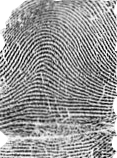
USES OF CRIMINAL PROFILING AND FORENSIC INVESTIGATION IN A CRIME SCENE. BY OKONTA CHUKWUEKWU .N. (CrFA, CNA, MBA.).
August 2021
USES OF CRIMINAL PROFILING AND FORENSIC INVESTIGATION IN A CRIME SCENE BY OKONTA CHUKWUEKWU .N. (CrFA, CNA, MBA.).
August 2021
INTRODUCTION:
CRIMINAL PROFILING
Definition: Criminal profiling is the process of using details and evidence of a crime scene to draw an analysis on the type of perpetrator that committed the crime. This process enables researchers and detectives to make assumptions about the criminal’s motive, behaviour, personality, and demographics due to the crime scene and evidence. Many of these criminals are presumed to repeat the crime the same way each time. This makes it harder for police to find the suspects of the crime and arrest them. Which leads to police seeking help from criminal profilers.
Informal criminal profiling has a long history. It was used as early as the 18805, when two physicians, George used crime scene clues to make predictions about British Serial Murderer, Jack the Ripper’s personality.
Criminal profilers are taskforce with professional thinking like the criminal. They draw evidence from research and statistical data when developing description of the suspect.
Criminal profiling has much potential, though not 100% effective, Criminal profiling can lead to tunnel vision, and make the process of solving crimes even harder. Much later we see how technology to digital forensic has made this criminal profiling a little easier.
let us look at this traditional criminal profiling case – Dr. Thomas Bond, a British Surgeon (1841 – 1901), I wish to state that the case is widely considered western civilization’s first true criminal profiler. Bonds rise to prominence originated with his London notorious Jack the Ripper killings.
In the 1880, serial killer Jack the Ripper terrorized the streets of London. The Police were having no luck in finding suspect. That’s when Philips got involved. In what many consider the first application of criminal profiling methodologies. Dr. Bond studied autopsy result and crime scene evidence from Jack the Ripper’s murder victims. Utilizing his expertise in human behaviour and biology, Dr. Bond drafted a detailed reprint of what he believed to be Jack the ripper’s personality traits, behavioral characteristics. Nevertheless, the early days of criminal profiling had now started and the future forensic investigations have relied upon the studied. Dr. Bond’s sound methodologies.
Look this case too-
Walter .C. Langer (1899 – 1981) holds Ph.D., Specialized in intersection of a persons conscious and unconscious fears and repressed memories which help him to resolve inner and outer conflicts.
After World War II broke out Dr. Langer profiled NAZI Movement especially Adolf Hitler applying background in behaviour and psychology and utilized the Allied Intelligence gathering of Hitler’s crime against humanity. A report about “The Mind of Adolf Hitler” was drafted by Dr. Langer was kept as secret for 30 years but released in 1972. It was stated in the report that Hitler will die by suicide and it was accurate.
Serial Killer:
A serial killer is typically a person who murdered three or more people usually in severe or abnormal psychological gratification, with the murders taking place over more than a month and including a significant period of time between them. While most authorities set a threshold of three murders, others extend it to four or lessen it to two. Psychological gratification is the usual motive for serial killing. The most serial killings involve sexual contact with victims. Motive of killing could include anger, financial gain and many more. The victim may be having something in common, for example dephographic profile, appearance, gender or race.
In the 21st Century:
The decline in number of serial killings has been caused by increased use of improved forensic technology and people behaving more cautiously.
Forensic Investigation:
Forensic investigation is the gathering and analysis of all crime-related physical evidence in order to come to a conclusion about a suspect. Investigators will look at blood, fluid, or fingerprints, residue, hard drives, computers, or other technology to establish how a crime took place. This is a general definition, though, since there are a number of different types of forensics. Like forensic accounting/auditing, forensic science, digital forensic, forensic psychology, forensic pathology, and many more.
Looking at the process of management of forensic investigation
Identification:
Identifying one or multiple murderers as being the work of serial killer in the list challenge an investigation faces, especially if the victim(s) come from a marginalized or high risk population and is normally linked through forensic or behavioural evidence. Should the cases cross multiple jurisdictions, the law enforcement system a certain country’s fragmented and thus not configured to detect multiple similar murders across a large geographic are.
Identifying data bases and increasing interdepartmental communication and holding multi-jurisdictional conferences regularly to compare cases giving departments a greater chance to detect linked cases and overcome linkages blindness.
Leadership:
Should play a small or virtually non-existent role in the actual investigation by assigning knowledgeable or experienced homicide investigators to lead positions, as well as provide support for the investigators.
Organization:
The structured organization of an investigation is key to its success, as demonstrated by the investigation on Gary Ridgway, the Green River killer. Once a serial murder case was established.
Resource Augmentation:
During the course of a serial murder investigation, it may become necessary of a serial murder investigation, it may become necessary to call in additional resources.
Communication:
By providing up-to-date briefing and information to others in the streets, the chances of catching a serial killer or finding solid leads are increased.
Data Management:
A serial murder investigation generates staggering amount of data, all of which needs to be reviewed and analyzed. A standardized method of documentation and distributing information must be established and investigators must be allowed to complete reports while investigating leads and the end of a shift.
Cyber Pofiling in Digital Forensic Process:
With the advent of technology, modern criminals use technology to commit their crimes. This has created requirement for performing traditional forensics analysis in digital world. investigators and researchers have conducted many researches and invented “Digital Forensics”. The simplest definition of digital forensics is the investigation of cyber-crimes. To evolve the domain digital forensics researchers adopted the techniques. Technologies and concepts that has been in used in traditional forensics like criminal profiling techniques and serial killers investigating techniques.
An attack profile could contain about motivation, breadth, depth, sophistication, concealment, attackers vulnerabilities and tools [1] see how they used for components in their criminal profiling methodology.
Breadth:
A breath in referring to a metric used to measure the scope or range of the attack.
Two key abstraction of depth. Those are host breadth and the host breath understands up to what extent the attacker has got in on a single host while the network breadth understands up to what extent the attacker has in on the network.
For instance, a port scan of a host to determine open ports/services on the target machine, would gain a high rating for host breadth. Breadth however, due to the lack of activities directing against other host on the network, a host scan, to determine online machines on the network breadth attack. Converting a host scan to determine online machines on target networking would score a high network breadth rating. Yet a low host breadth rating furthermore, a systemic and exhaustive scan of all ports and services on a network would yield both a high hope and network breadth rating [2]
Depth:
This is also similar to the breadth but measure the extent or degree of infiltration of te nature of netwot intrusion.
If the attacker used the computer to compromise and get into the network, this is defined as host depth. If the attacker performs some advanced attackers inside a host/sever, this is defined as service depth.
Vulnerabilities and Tools:
The level of vulnerability and exploit used to conduct the attack plays a vital role in this profiling. Some attackers use existing vulnerabilities and basic tools to conduct the attack while other attackers use some advanced vulnerabilities such as zero-day exploits to commit the attack.
This study level of the vulnerability, how easy was it to commit the attack, was there any tool used, is the attacker script kiddy, is the attack a sophisticated attack to create the profile.
Psychological Motive:
The psychological motive of the attacker will help in cyber profiling.
Conclusion:
Looking at the old method of criminal profiling to detect serial killer example of Dr. Thomas Bond in the case of Jack Ripper in 1880 and Dr. Walter .C. Langer (1899 – 1981) in Adolf Hitler case. It is certain that, modern science is applying those old knowledge into cyber profiling.
Therefore, if one wants to be a good forensic forensic investigator such person must embrace digital forensics because digital forensic aids in criminal profiling because it adopts technologies.
References:
- Mccrew, R & Vaughn, R.S. (200) “Experiences with Hongpot System Development, Deployment and Analysis”, Hawaii International Conference on System Sciences, 2006.
- L. Kwan P. Ray and G. Stephens, “Towards a Methodology for Profiling Cyber Criminals”. Proceeding of the 41st annual Hawaii International Conference on system services (Hicss 2008) Wakoba, H1 2008 pp. 264 – 264.
